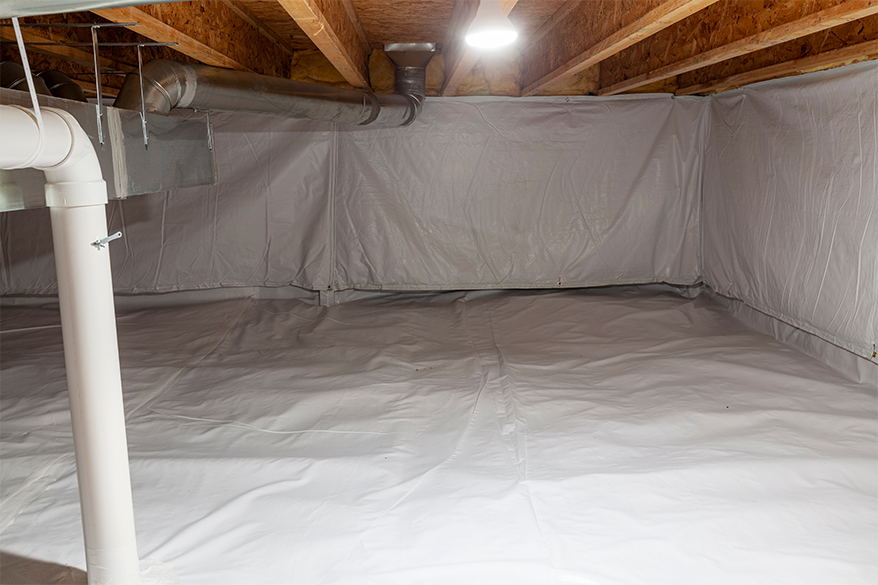Crawl Space Vapor Barrier
A crawl space vapor barrier is an essential component in maintaining the health and integrity of your home. This barrier serves as a protective layer, preventing ground moisture from seeping into your crawl space. Excess moisture can lead to a host of problems, including mold growth, wood rot, and increased humidity, which can affect the overall air quality in your home. Installing a vapor barrier, helps mitigate these risks when coupled with a dehumidifier, preserving the structural strength of your home and ensuring a healthier living environment. We offer a lifetime vapor barrier warranty and a no cat urine odor guarantee.

Is a Crawl Space Vapor Barrier Necessary?
Crawl space vapor barrier (or vapor retarder) is one of the most important items you should install to help control moisture. Properly installed crawl space plastic helps make sure your crawl space humidity is controlled. However, vapor barrier alone does little to control humidity.
Why Does My Crawl Space Smell Like Cat Urine?
Crawl space odors like cat urine smells can originate from the vapor barrier or under it. Vapor barriers that are reinforced can degrade and delaminate. When the reinforced vapor barrier separates, it holds moisture. The trapped moisture can grow bacteria and mold and begin to give off an odor similar to cat pee.
Crawl space vapor barriers installed incorrectly can also cause odors in your home. Throwing new plastic over old vapor barrier in the crawl space should never be done. The multi-layers of vapor barrier can trap moisture, mold, bacteria, and more. Moisture often gets trapped in the dual-layer reinforced vapor barrier materials. The reinforced plastic is manufactured by gluing two pieces over the nylon string. Glues and adhesives eventually fail in a damp crawl space. These materials separate and moisture gets trapped inside. The wet nylon grows bacteria and fungus that creates a cat urine odor. We eliminate this during crawl space encapsulation by not installing reinforced vapor barriers.
Get a Lifetime Vapor Barrier for Your Crawl Space
"*" indicates required fields
Crawl Space Vapor Barrier Material
How Thick Should Crawl Space Plastic Be?
Many contractors and manufacturers of crawl space vapor barrier material mislead people about the thickness of the plastic. We found plastic sold and installed as a reinforced 20-mil vapor barrier that was actually 6-mil. The thickness of the plastic was being measured at the reinforcement, not the plastic. Also, never use plastic as a substitute for crawl space insulation. Insulate and encapsulate your crawl space properly for maximum comfort and energy efficiency.
Crawl Space Ninja installs a thick mil solid-state or woven vapor barrier material. Our uniquely manufactured plastic will never separate and all surface area is a consistent thickness due to the Crawl Space Ninja Vapor Barrier being solid or woven and not thinly glued together sheets. Our vapor barrier is the maximum thickness it can be and still be flexible enough to install in crawl spaces. We have tested thicker plastic materials only to realize they would not bend as well as we needed them to.
Can Crawl Space Plastic Stop Radon?
Should I Use an Underlayment?

How Long Does a Vapor Barrier Last?
Watch Franchise owner, Michael Church, discuss the lifespan of vapor barriers in your crawl space. For more informational videos, check out our homeowner tips and guides on our YouTube Channel.
Considering a Vapor Barrier? Drop us a line today for a free inspection!

